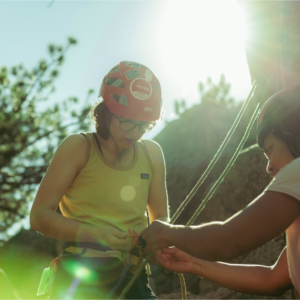The Light After the Dark
Emma Cook-Clarke stood near the peak of the mountain-running world until a minor injury turned major. Now, after an epic test of fitness, she’s finding that the forced downtime might just be the missing ingredient she needed to win.
IMAGES: ANGELA PERCIVAL | WORDS: CHARLOTTE AUSTIN
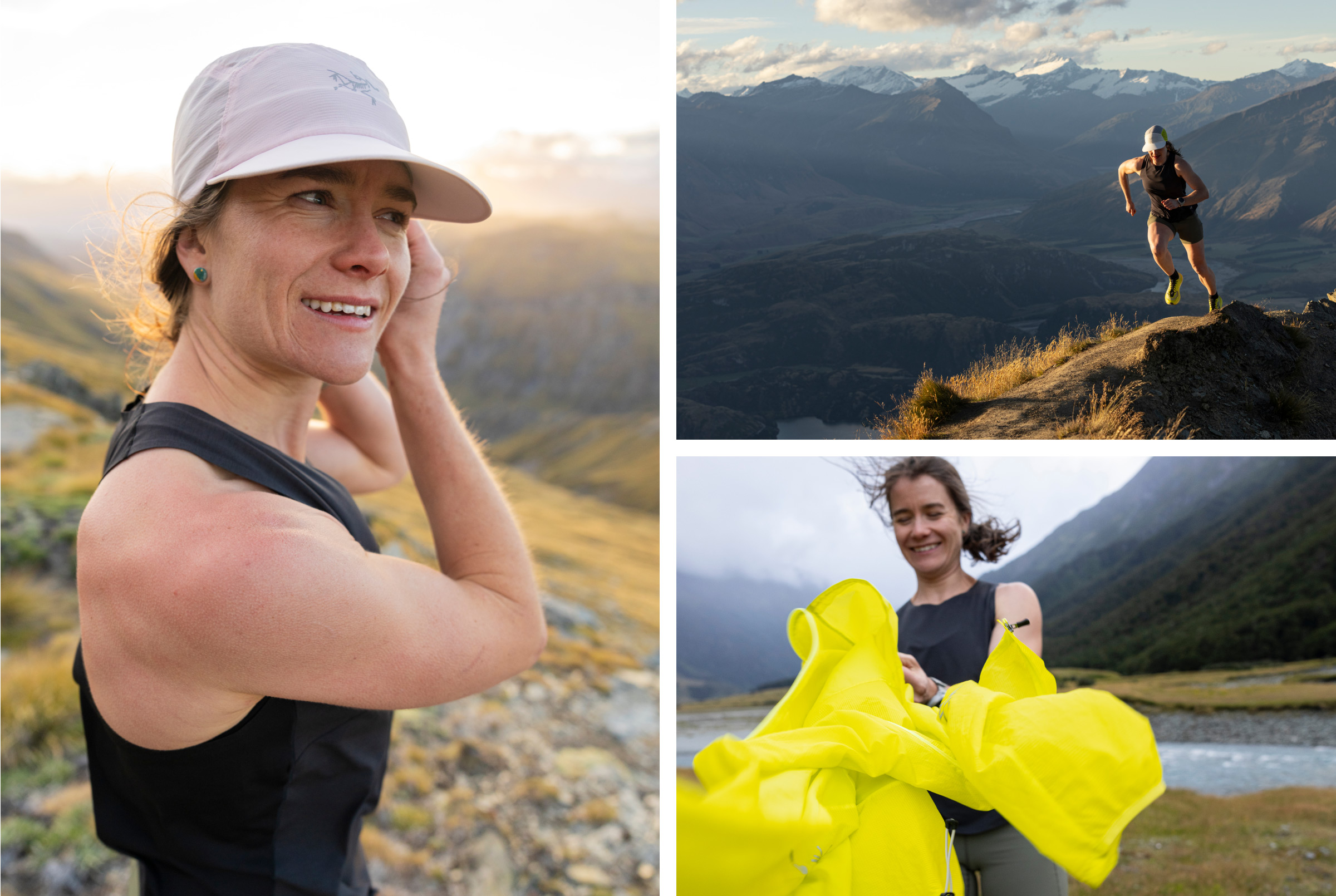
“I’m not very good at sitting still,” admits Emma Cook-Clarke.
The Arc’teryx mountain runner and firefighter recalls the exact moment she had to confront this truth, and learn from it. It was a crisp day in September 2023, six weeks into an injury that seemed “small and silly enough” to heal overnight, that Emma finally accepted what no competitive athlete wants to hear: Her body needed a break.
The timing made sense, though it couldn’t have been worse. She’d just tied for first in the Skyrunner World Series, the most technical running circuit on earth — placing second in the Hochkönig SkyRace in Maria Alm, Austria; winning the Ultra SkyRunning Madeira in Portugal; and taking second in the Minotaur SkyRace at Crowsnest Pass in Alberta, Canada, a week later. She felt as strong as ever, she says — but also on the brink of total, mind-to-toe exhaustion.
It was on a run with a friend to scope out a training route around the Canmore Quad, a classic peak-linking challenge near home, when her banner season came to an end. Realizing her body wasn’t feeling it, she did the smart thing and called it early. “I felt sick and achy,” she says. “So I just took the most efficient route home on my gravel bike, and I came around a corner that was steep and sharp. My back tire kicked out, and I fell. I landed hard on my knee, and I knew something was wrong.”
She got herself home, doing her best to shake it off. She ate something, tried to walk the dog. But it wasn’t happening, so she drove herself to the emergency room. “The X-ray was clean,” she remembers. “But the knee was not comfortable at all.” The ultimate diagnosis reflected that the impact of landing on her patella had severely irritated the natural cushioning of her kneecap. Her prescription? To rest. A lot. “I didn’t move at all for a month,” she says. “I couldn’t walk, I couldn’t swim, I couldn’t bike.”
Unlike a broken bone, which can be tracked and rehabbed along a certain course of TLC, Emma’s injury was complicated, the prognosis unpredictable. After that first month of bedrest, recovery continued to inchworm along, throwing Emma’s life sideways. She had no choice but to take time off from the fire department. She had to sit, side by side, with some personal demons: self-doubt, fear that she’d lost all her forward momentum, anxiety over her future. And her training season — integral to the upcoming year she had planned — was cut short.
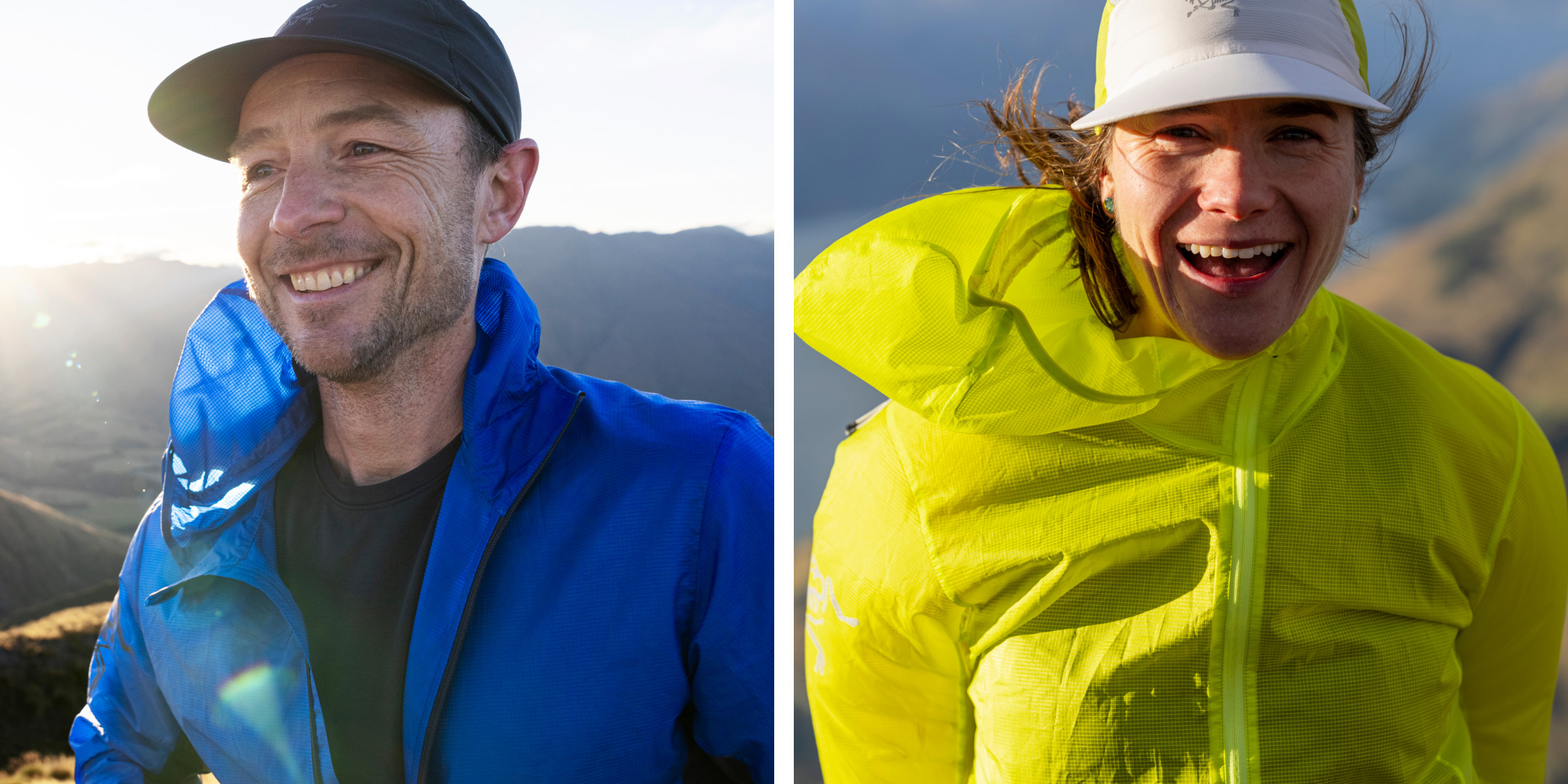
Connecting Over Challenge
Emma has a long history of high-level athletics. She played competitive soccer and rugby until college, when she adjusted her focus to running, competing for the University of Calgary in cross country and track and field. After earning her degree in environmental science, she combined her passion for running with her love of the alpine, exploring the world of ski mountaineering and competing in mountain trail races.
“Running is such a simple way to increase my confidence,” says Emma. “It’s just me and my body out there, accomplishing something incredible.” For some, charging up mountains (and trying not to eat dirt on the way down) is the absolute pits. For Emma, it’s a welcome meditation between her taxing and emergency-ridden job. “Running high-pressure terrain forces a large part of your brain to be right there,” explains Emma. “When you’re pushing yourself hard, the only thing you can think about is your breathing, your next step.” So naturally, when she and her partner settled in Canmore, she joined the local running community…and started to post results that put her firmly on the radar.
 Running is such a simple way to increase my confidence. It's just me and my body out there, accomplishing something incredible.
Running is such a simple way to increase my confidence. It's just me and my body out there, accomplishing something incredible. 
It was through that community that she met fellow Arc’teryx athlete and athlete-insights specialist Adam Campbell, who rapidly became a friend and mentor. Multi-hyphenate Adam — triathlete, lawyer, coach, product tester, high-level trail runner — has a rich depth of experience navigating success, injury, and personal challenge. Before Emma’s fall, Adam had acted as a kind of coach to Emma, sharing his wisdom on and off the trail about races she should enter and general training advice. After her injury, he called on a different piece of life experience: recovery. Having survived a major alpine accident in 2016, when he fell 300 feet, breaking his back, hip, and ankle, Adam’s become somewhat of a setback guru. “I didn’t know if I’d ever walk again, let alone run,” he says. “So when I heard about Emma’s knee, I reached out.”
They kept in touch over the winter as Emma worked through the rehab process: extensive physical therapy, cross-training, self-evaluation, and assessment. Her knee took months longer to heal than she’d expected, she says, and she struggled with the loss of her peak summer training. It wasn’t until February that she felt ready to truly test her fitness as a runner — but being in the Canadian Rockies, sprinkled with snow even during a bizarrely mild winter, home wasn’t an option.
So Emma recruited Adam to co-create a kind of midwinter training camp in the Southern Hemisphere, where she could run free on dry dirt and scree. “I didn’t know what condition I’d be in, or how my body would feel running,” says Emma. “But it was time to see how my knee would hold up to longer distances, and whether taking time off would actually be as healthy as I’d hoped.”
Their plan came together quickly: to spend over a week on New Zealand’s southern island, exploring the steep alpine terrain around Queenstown and Wanaka.
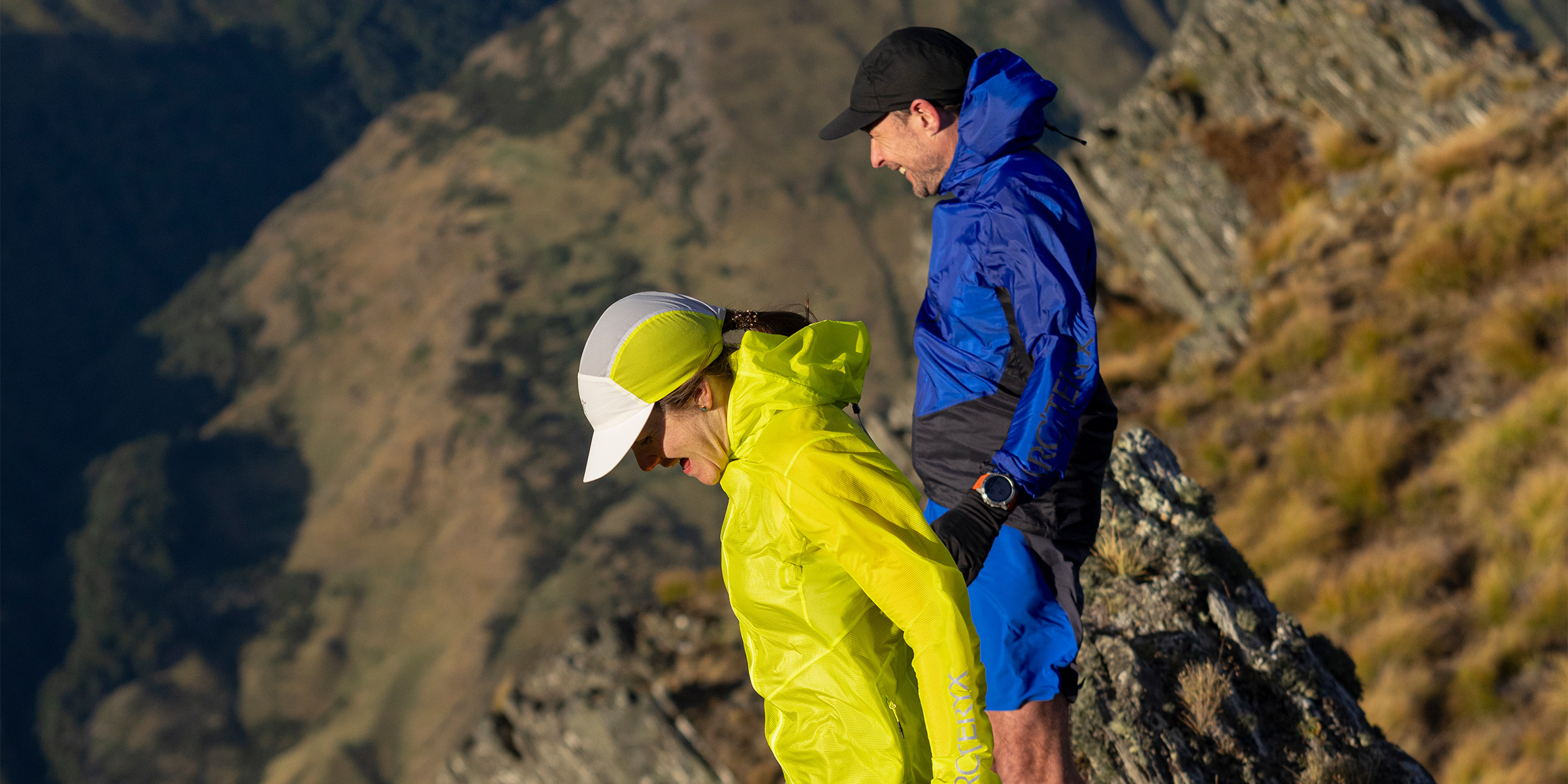
A Midwinter Training Camp
“In prime racing season, this sensation of feeling like an animal takes over me. I feel springy and able to fly,” says Emma. “I absolutely didn’t expect to feel that way yet. But upon landing, I could feel my body raring to go in a way it hadn’t since my accident, as if the time off was a mental and physical rebirth of sorts.”
As soon as Adam landed, the two immediately headed to Ben Lamond, a 1,748-meter peak known for a breathtaking 360-degree panoramic view of the Wakatipu Basin, including Lake Wakatipu, the Remarkables, and Cecil Peak.
“I pulled up to the hotel after 20 hours of travel and a 21-hour time change, and Emma casually suggested that we go check out one of the local peaks,” says Adam, laughing. “Our hotel had rental bikes, so we biked to the base of the mountain. And Emma just started running up this very steep hill, and I thought, Okay, this is maybe a little quicker than I anticipated.”
The run was Emma’s first big and fast run post-injury, and she was delighted to find that the movement felt natural and strong, a homecoming rather than a hangover. The warm New Zealand sun eased her winter-tight muscles, and she relished wearing light, breezy clothes after months of layering for cold. Adam was happy to see her moving well, and deeply impressed by her speed. “I finally told her that she didn’t have to wait for me, and she proceeded to just sprint off into the distance,” he recalls. “I stumbled after her.” After descending together, they quickly realized that she’d set a women’s FKT, or fastest known time, on that route.
From Queenstown, the duo launched toward Wanaka, a smalltown set on the southern end of its namesake lake. Surrounded by snowcapped mountains, it’s the gateway to Mount Aspiring National Park, an aptly named wilderness of glaciers, beech forests, and alpine lakes. They set up a base for their training camp and planned a variety of daylong missions in the sunshine and warmth.
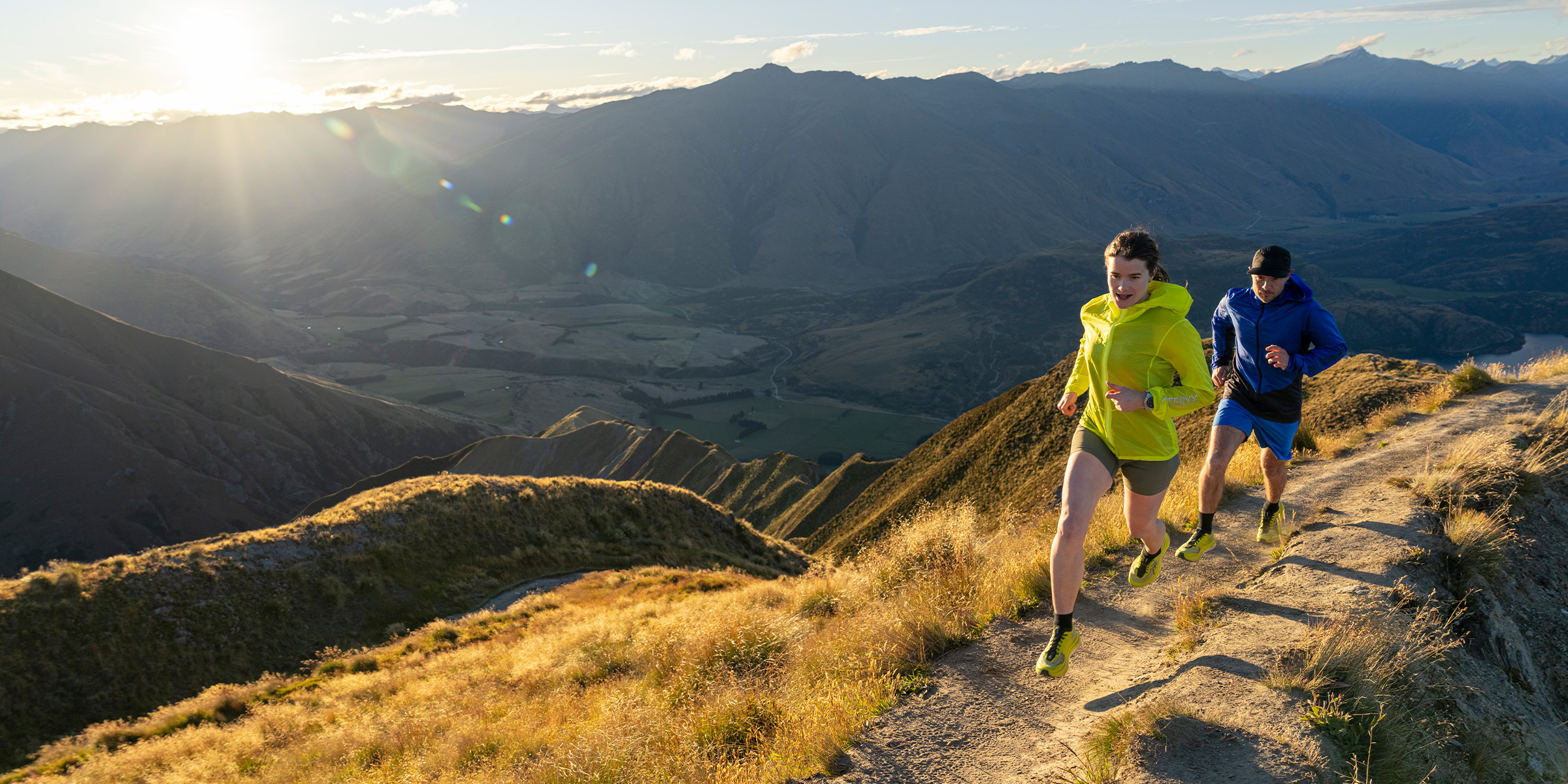
Learning Through Recovery
In between dancing through long days in the sun, devouring flaky pastries from local bakeries, swimming in lakes to cool off, and frolicking with never-ending flocks of sheep (no, really, they hopped fences to have some quality time with New Zealand’s cutest), Adam and Emma had time and space to discuss the deeper implications of injury and recovery.
“I felt really guilty for the first few weeks after my accident,” Emma reflects, noting that she’s used to sprinting between activities to maximize her time and productivity. “Then I realized…I needed that time off. I was pushing it too much. Sometimes we need a forced pause. It was actually productive to stop working, stop training, and do a self-evaluation of where I am, what I want to do, and who I want to be. And that allowed me to stop worrying so much.”
 For a lot of athletes, challenging movement is a powerful form of self-expression.
For a lot of athletes, challenging movement is a powerful form of self-expression. 
Adam understands, drawing on his own history. “For a lot of athletes, challenging movement is a powerful form of self-expression.” During times of physical trauma, he believes, when athletes need a release the most, they can feel as though they’ve lost that outlet — and the community embedded within the sport. But that experience of loss has a silver lining, he says. “You have to learn to be a richer, deeper person.”
One of the ways Emma navigated her downtime was by leaning into her visual art. “My inspiration comes from the mountains,” she shares. “It’s a nice way of slowing down and giving more respect to the places I see. Themes or patterns or lines that form through geology or snow or weather…art allows you to experience that nature for longer.” She’s experimented with drawing and painting, sometimes on wood, and sometimes using natural charcoal. She’s also painted a handful of murals, and hopes to create more. “It’s a way of staying connected to the mountains, so that even when I can’t be there in person, a part of me can be there in spirit.”
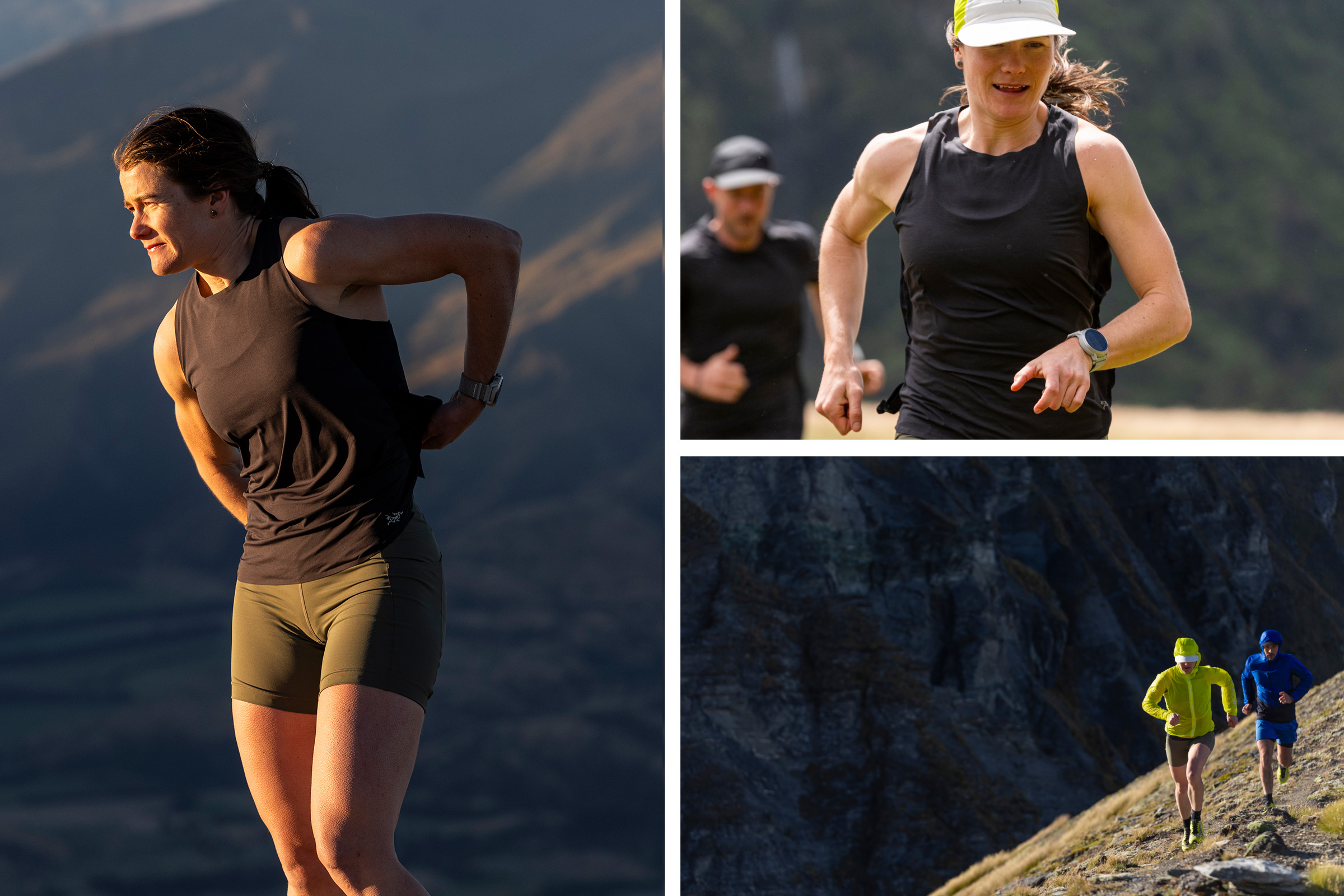
Two for the Books
After an unexpected alpine snowstorm took running Dragonfly Peak off the table, Emma and Adam set their sights on a new full-day objective: the picturesque Roys Peak (1,578 meters), a stunning mountain located a short drive from Wanaka that’s known to be one of the best running routes on the South Island. There are several ways to the top, but Emma chose the one that Adam called “ridiculously steep,” which bypasses the switchbacks for a robust uphill grind through thick grass.
As Emma bounded uphill, Adam followed, grinning at her success. “When healing an injury,” he says, “the best thing you can do is surround yourself with a support network. Really lean into that network during times of struggle — that’s what they’re there for. And the people around you really appreciate when you let them help. It can be hard, but it’s also really rewarding.”
“I was having so much fun,” Emma says, “just being so present in my body again and soaking up a new part of the world.” Upon reaching the top, she realized that she’d set an all-gender FKT by two seconds, becoming the fastest person to ever document a time on the route. Adam high-fived Emma’s second record-breaking run, then together, they started the descent as the sun disappeared.
On the way down, Emma soaked in the rewards of her patience and commitment to healing. She lit up as she ran, realizing that — like the Milky Way coming to life in New Zealand’s blackening sky — a little darkness can become the backdrop to a brilliant display.


